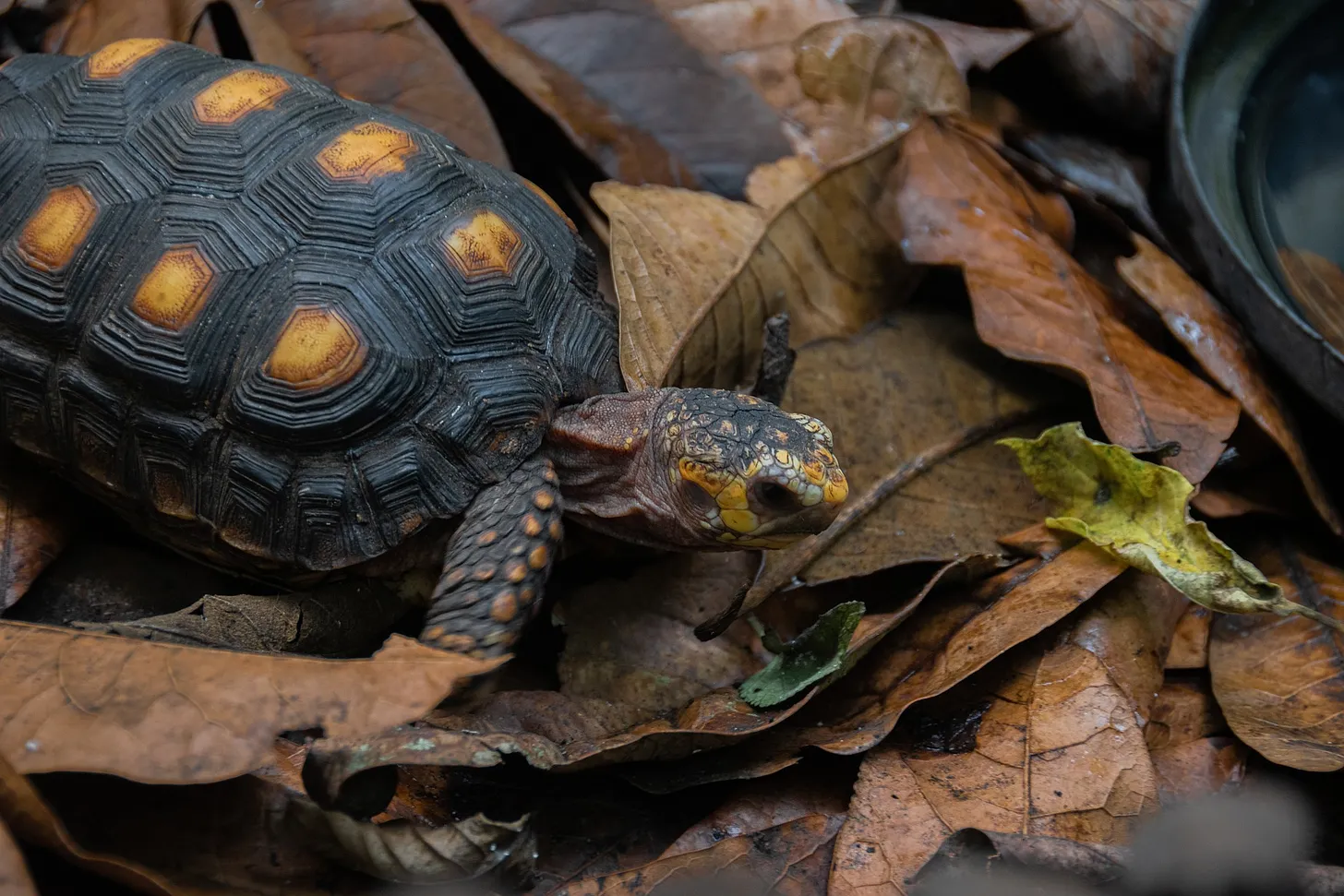The Red-Footed Tortoise
Learning through observing the behaviour of another individual is adaptive, as it provides a shortcut to finding a solution, and so avoids the costly process of trial and error learning.
From Chris and Uta Frith's new book What Makes Us Social?
In the 1960s, the social psychologist Albert Bandura (1965) claimed that social learning is unlike other forms of learning because it does not need trial-by-trial reinforcement. Trial-by-trial learning is a basic mechanism that is still studied extensively in animal experiments. It depends on direct experience. We perform an action, and if the outcome is good, we repeat it. If the outcome is bad, we try another action.
Bandura pointed out that, when we learn from others, we can have "no-trial learning." He proposed that, rather than learning from our own direct experience of rewards and punishments, we can learn by witnessing the behavior of others. Such vicarious learning can be seen in all animals, from fruit flies to meerkats to humans.
Consider the red-footed tortoise. These are not the most social animals. They live lives of almost complete isolation, apart from the brief interactions necessary for reproduction. And yet they can learn to perform a difficult task, a detour problem, simply by observing and copying another tortoise that has already learned how to do it (Wilkinson et al., 2010). Without a model to copy, the tortoise would have to make many unsuccessful attempts and may never even be able to reach the goal at all.
The paper linked above makes the Friths' point more starkly, with (a) on the left hilariously showing the number of tortoises that completed the detour task successfully without having observed another tortoise doing so first and (b) on the right showing the number that completed the task after observing another tortoise doing so. (The "shading" on the graph represents the direction [right or left (no shading)] the tortoise took to reach the food. The demonstration was always to the right.)
From that paper:
Learning through observing the behaviour of another individual is adaptive, as it provides a shortcut to finding a solution, and so avoids the costly process of trial and error learning. . . .
We examined the social learning abilities of the redfooted tortoise (Geochelone carbonaria), a naturally solitary species that inhabits the margins of tropical forests in Central and South America (Strong & Fragoso 2006). Though they may naturally interact with conspecifics (e.g. mating opportunities; Auffenberg 1965), they do not form permanent groups. Indeed, parental care has not been observed in tortoises (Burghardt & Layne 1995): eggs are laid in holes and then left. Once the infants hatch, they dig themselves out of the hole and disperse. Despite their solitary nature, there is evidence that this species possesses a sensitivity to visual social cues (Auffenberg 1965; Wilkinson et al. in press). This makes the red-footed tortoise an ideal subject for examining whether a solitary species can use the behaviour of a conspecific to reach a goal. . . .
The results show that the solitary red-footed tortoise can learn to solve a task by observing the actions of a conspecific. This task was not solved through individual learning. After observing a demonstrator complete the detour, all the observer tortoises successfully reached the goal while all the non-observer animals failed.
And here the book's authors ask the questions that were inspired by the study:
How do we learn from others? What are the basic tools through which we exploit the knowledge of others and need not learn afresh? Just by inspection of random cases, we can conclude that the major tool is copying. If we go where others go, we are likely to arrive in places where there is food and water, and hopefully an absence of predators. If we eat what others eat, then the result is likely to be nutritious rather than poisonous.


